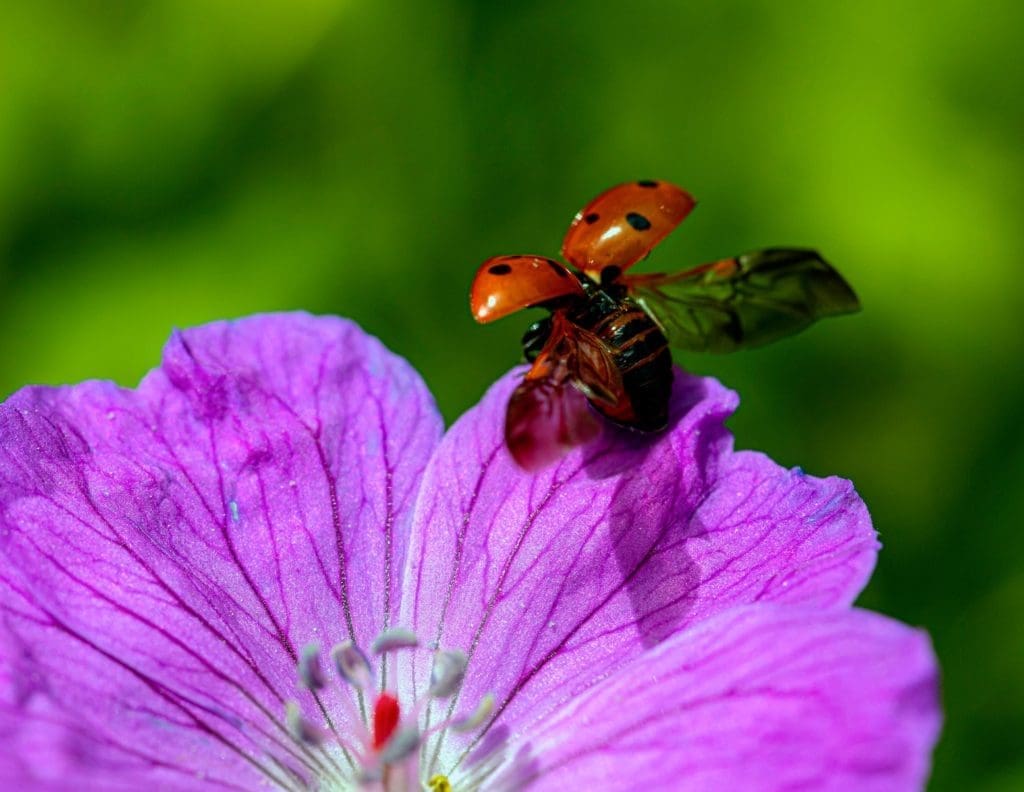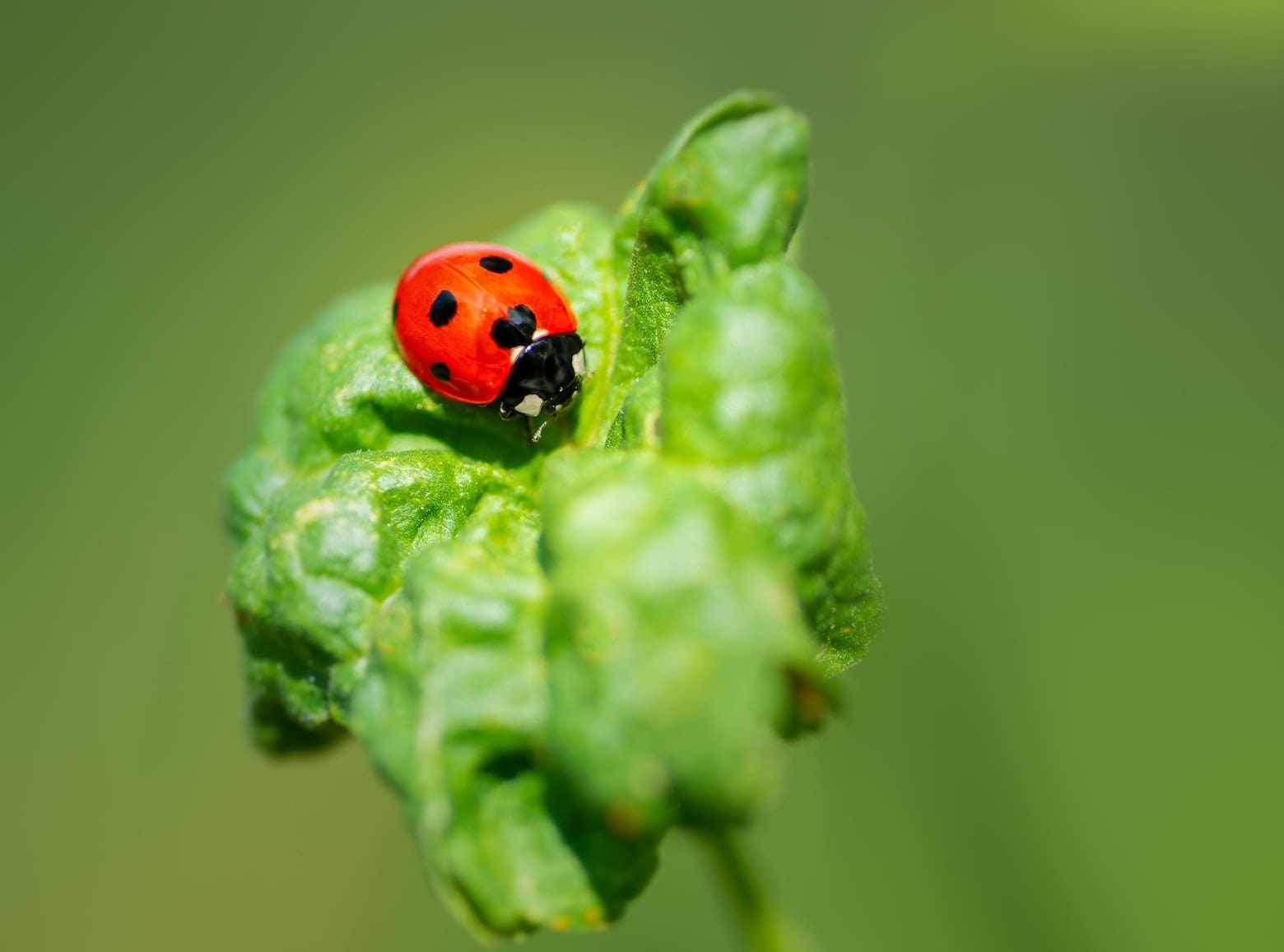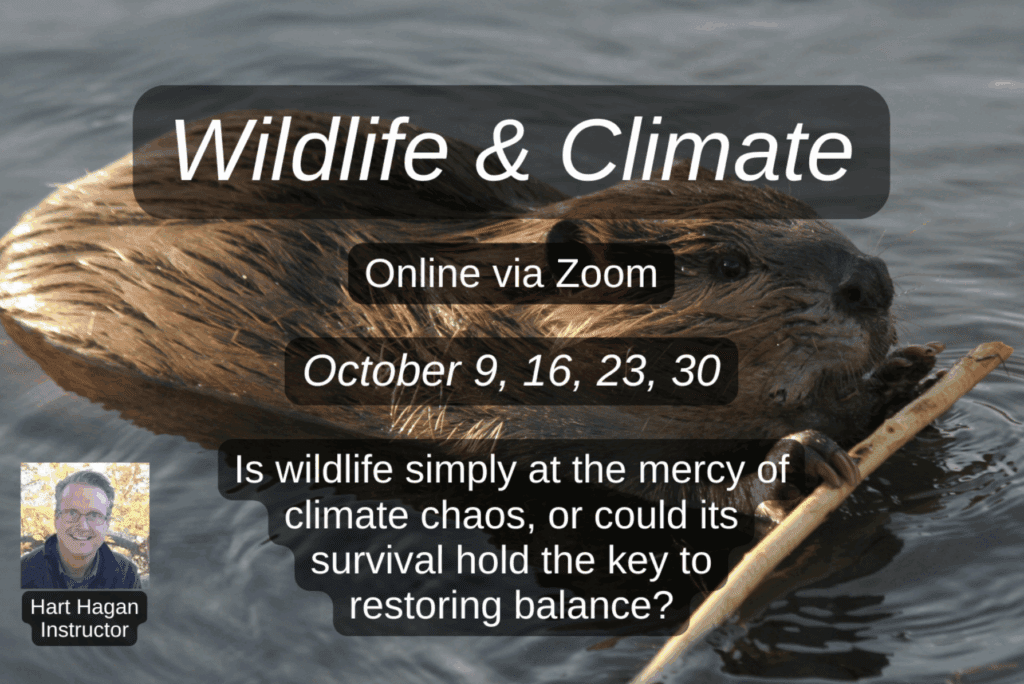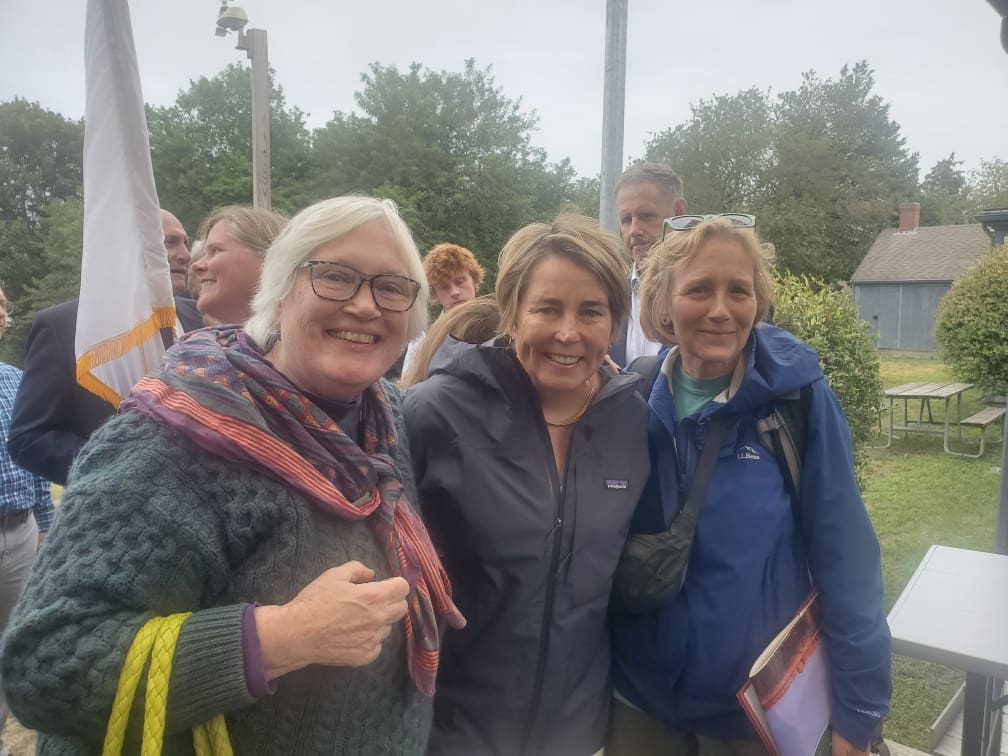What tiny creature brings luck to farmers and other folks all over the globe?
The ladybug!

One Lucky Lady
Ladybugs, or beetles of the family Coccinellidae, are small, often colorful rounded insects beloved by children’s rhymes and gardeners alike.
Ladybugs are thought to be a sign of luck in many cultures and urban myths. Whether it’s because of their cuteness or their supposed powers of good fortune, people often hold ladybugs as an exception to their aversion to insects. Perhaps the lovely ladybug can pave the way to a more widespread appreciation for insects and their importance in the web of life.
There are a variety of superstitions or myths around ladybugs, as people of different cultures have developed different takes on what kind of luck this little critter brings. Some view ladybugs as portents of love, and say that the redder they are the more luck they bring. Others say that it’s the number of spots that count – predicting the number of years of good luck you’ll have, or the number of months until your greatest wish comes true, depending on whom you ask.
In Norway, it’s said that if two people catch sight of a ladybug at the same time, they will fall in love. Whether ladybugs are said to bring luck in love or in the year’s coming harvest, it’s widely believed that killing a ladybug confers bad luck, so steer clear!

Doing their part
In all likelihood, ladybugs have become associated with luck because of the very real help they provide to farmers and growers. Ladybugs prey on aphids, mealybugs, and other insects that can damage crops by latching on and sapping them of their nutrients. While a number of artificial pesticides can be used to control such problems, these dangerous chemicals often have unintended consequences, harming not only the insects they target, but also killing beneficial insects, running off and seeping into groundwater, poisoning soil, and altering ecosystems. Ladybugs provide a natural alternative to chemical pesticides because they target the pests specifically, leaving plants, other insects and animals, and humans all unharmed.
Ladybug larvae feast on aphids, mealybugs, and other soft-bodied insects, and can consume up to 50 aphids a day. They continue to maintain this diet in their pupal and adult forms, and may eat up to 5000 insects in a lifetime. Even through metamorphosis, some things never change!
Check out this short video showing the life cycle of the ladybug:
A diverse family
Also known as “ladybirds” or “lady beetles”, ladybugs are found pretty much everywhere around the globe, and there are over 5000 different species of them. While ladybugs (at least here in the Northeast US) are famous for sporting a pattern of red shell with black spots, they can actually have a variety of colors and patterns.

Their bright color and patterning signals to predators that they should stay away, or face a very disappointing meal. Indeed, when under threat, ladybugs release a distasteful fluid from their joints. As is often the case with many other familiar plants and animals, these insects are more than meets the eye.
Ladybugs are a great example of a creature that is beloved for its contributions to its ecosystem, enabling plant life and complex networks of creatures to thrive. When we pay attention to the way other organisms help out in their own habitats, we come to realize that you don’t need luck when you have healthy ecosystems. By using natural means of pest control and working with other life forms to keep systems in balance, we can make our own good fortune.
Fingers crossed,
Maya

Maya Dutta is an environmental advocate and ecosystem restorer working to spread understanding on the key role of biodiversity in shaping the climate and the water, carbon, nutrient and energy cycles we rely on. She is passionate about climate change adaptation and mitigation and the ways that community-led ecosystem restoration can fight global climate change while improving the livelihood and equity of human communities. Having grown up in New York City and lived in cities all her life, Maya is interested in creating more natural infrastructure, biodiversity, and access to nature and ecological connection in urban areas.
Sources:
https://entomology.ca.uky.edu/ef105
https://kids.nationalgeographic.com/animals/invertebrates/facts/ladybug
https://organiccontrol.com/lady-bugs/







